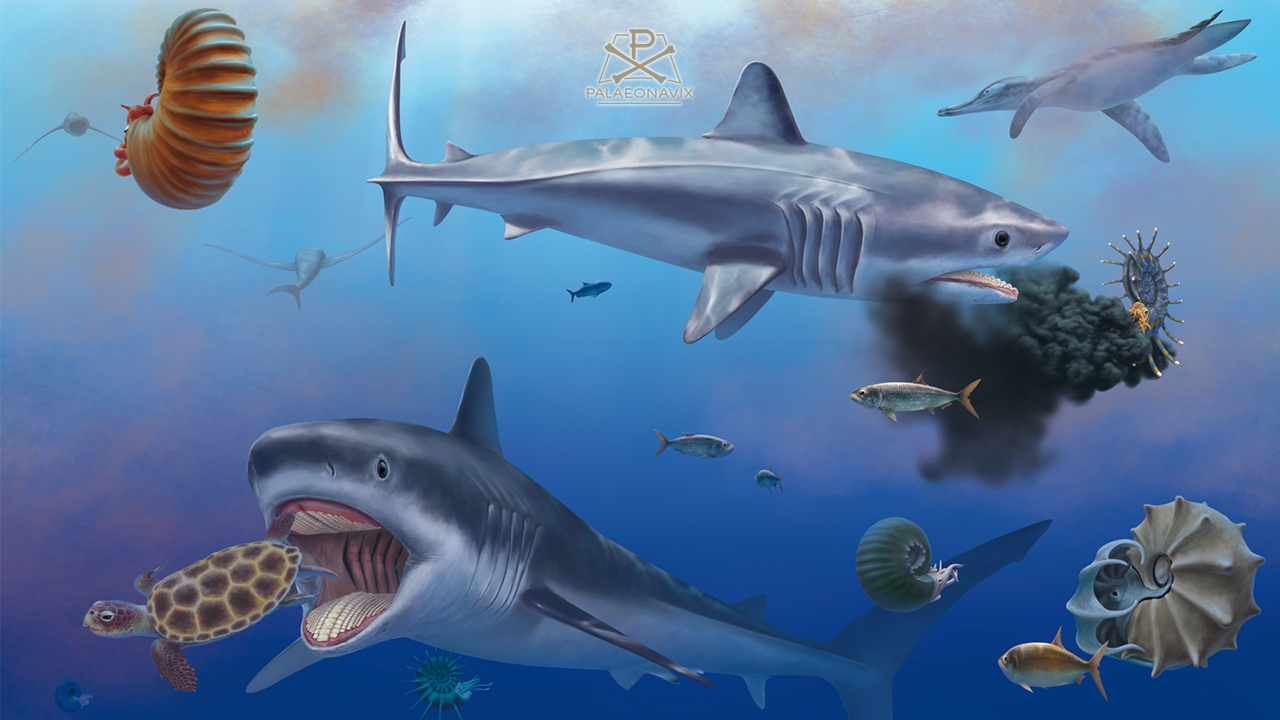Sharks as ammonite crushers: the mystery of Ptychodus solved
Blunt shark teeth are found in Cretaceous sediments worldwide. Entire pavements of teeth are rarely preserved. It is not surprising that skeletons of cartilaginous fishes are rarely preserved. The shape, lifestyle and relationships of Ptychodus therefore remained a mystery for a long time. Some suspected it was a slow swimmer that rummaged for clams and crustaceans in the seabed. This makes it all the more astonishing that new finds even reveal the outline of the fins. The body shape is typical of the open sea, not only because of its relationship to the great white shark or makos. So what kind of food is suitable if these adaptations never reappeared after the Cretaceous period? Turtles are still victims of classic, sharp-edged shark bites. However, masses of ammonites once roamed the oceans. If one smashes their shells, one gets plenty of muscle flesh. It is quite possible that such plankton clouds gathered a colorful assemblage of the fauna of what is now Mexico: ammonites (clockwise: Calycoceras, Pseudaspidoceras with ink, Mammites, Fagesia and the spiny Camerunoceras), bony fish (Goulmimichthys), plesiosaurs (Mauriciosaurus) and plankton-filtering eagle sharks (Aquilolamna, background).
digital painting, 2023


